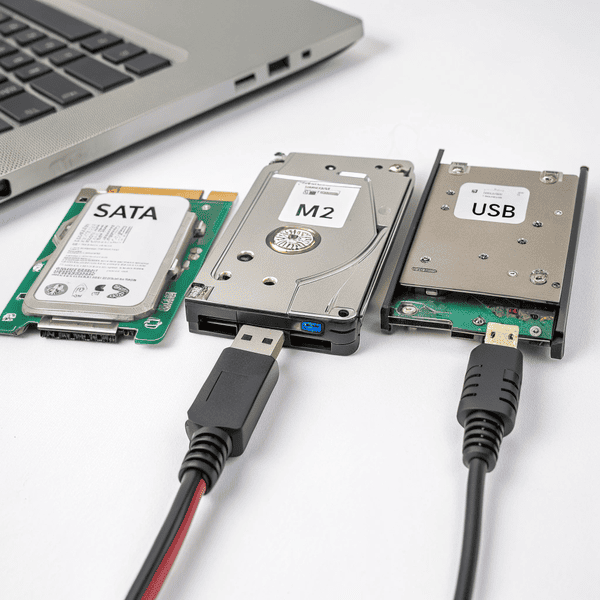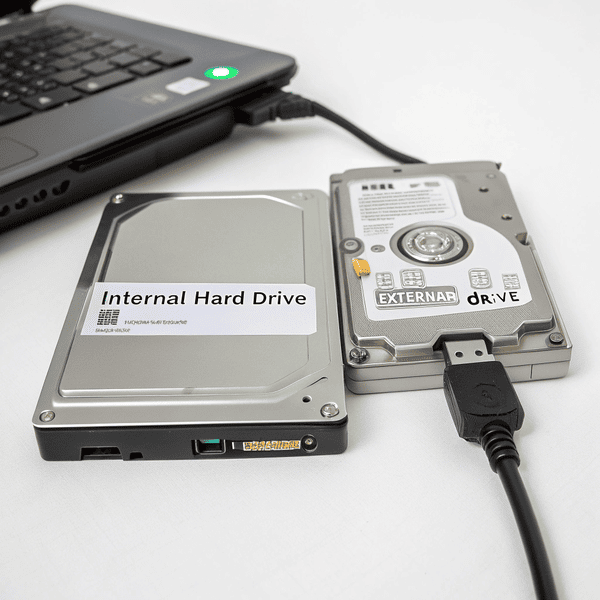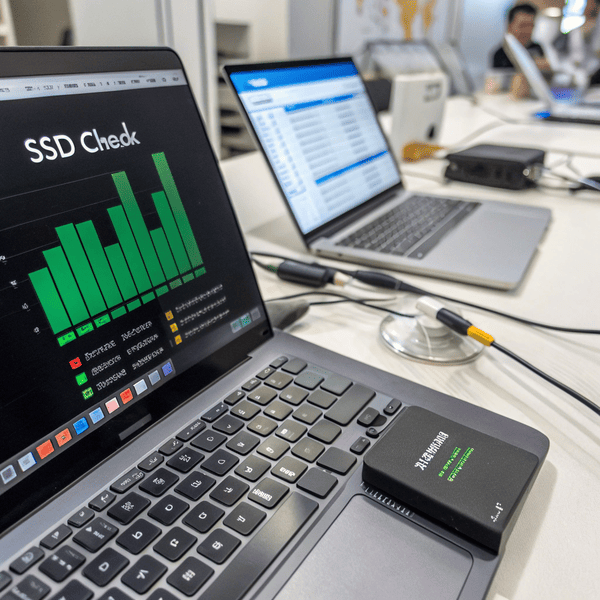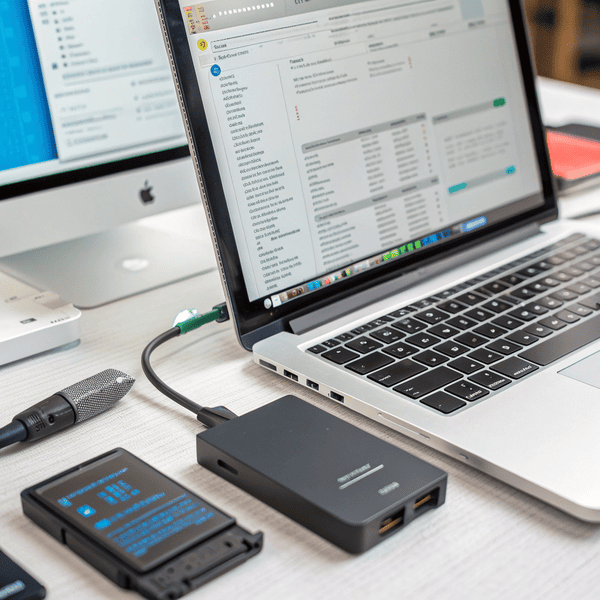When I switched from using only internal storage to adding external drives, I worried if the speed and reliability would match. Many wonder if going external creates problems or risks for important work.
External drives are convenient for backup and portability, but they usually run slower and can be less reliable than internal drives due to connection limitations and extra physical handling.
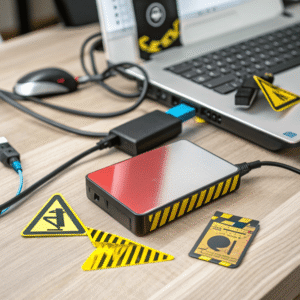
Thinking that all Thinking that all drives perform equally leads to trouble. I learned that each type has its strengths and weaknesses. Let’s dig in and see how they compare, so you can pick the right approach for your data[^1].
[^1]: Exploring data storage options will ensure you make informed decisions for your data management.
perform equally leads to trouble. I learned that each type has its strengths and weaknesses. Let’s dig in and see how they compare, so you can pick the right approach for your data.
Does an external hard drive work the same as an internal hard drive?
I wondered if plugging in an external drive would work just like an internal one. The idea seemed promising, but I soon noticed differences others should know.
External and internal hard drives store data similarly, but internals connect faster and are more stable than externals, which rely on slower ports like USB.
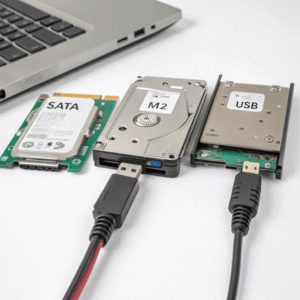
External drives look like internal ones when you browse files. Both are detected by your computer and can run backups, file storage, and media. But their speed differs. Internal drives use SATA, PCIe, or NVMe directly connected to your motherboard. External drives rely on USB, Thunderbolt, or eSATA ports that limit transfer rates. External drives often disconnect unexpectedly if cables get bumped or lose power. Internal drives are less likely to do so. I use externals for transport and backups, but rely on internals for tasks where speed and reliability matter most.
| Feature | Internal Drive | External Drive |
|---|---|---|
| Connection | SATA/PCIe/NVMe | USB/Thunderbolt |
| Speed | Faster | Slower |
| Stability | High | Lower (can disconnect) |
| Use Case | OS, apps, primary storage | Backup, portability |
What is the downside of an external hard drive?
A client once lost a project when an external drive stopped working without warning. These issues made me careful about trusting A client once lost a project when an external drive[^1] stopped working[^2] without warning. These issues made me careful about trusting external drives as my only solution.
[^1]: Explore this link to learn how to protect your data and avoid losing important projects due to external drive failures.
[^2]: This resource provides essential troubleshooting steps and recovery options for when your external drive fails unexpectedly.
as my only solution.
External hard drives are more prone to physical damage, disconnections, slower speeds, and data loss compared to internal drives. They are less secure for critical data.

External drives travel, get knocked around, and face outside risks. They depend on cable integrity and computer power, not just their own hardware. USB or external SSD connections can break, sometimes corrupting files or making the drive unreadable. Shock or drops may result in sudden drive failure, especially for spinning hard drives. Security risks also rise—external drives can be lost, stolen, or infected with viruses if connected to different machines without care. I once had an external drive malfunction from a loose connector during a backup, which forced me to rebuild files from scratch. Internal drives, protected inside stable hardware, rarely risk the same dangers.
| Downside | External Drive | Internal Drive |
|---|---|---|
| Physical Damage Risk | High | Low |
| Accidental Disconnection | Possible | Rare |
| Transfer Speed | Limited by port | Maximum speed |
| Security | Easily stolen | Secured in system |
| Data Integrity | Can be compromised | More reliable |
Are internal and external SSDs the same?
At first, I thought SSDs were all alike, just with different cables. After upgrading several systems, I found that’s not exactly true, and At first, I thought SSDs[^1] were all alike, just with different cables. After upgrading several systems, I found that’s not exactly true, and design matters.
[^1]: Understanding the various types of SSDs can help you make informed decisions for upgrades and performance.
.
Internal and external SSDs use similar flash memory, but externals add extra casing, interface chips, and may have lower speeds due to their connection type.
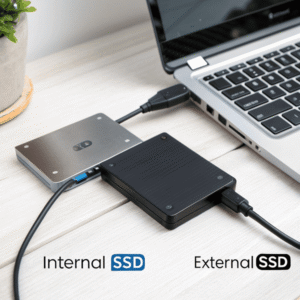
Both types work with NAND flash storage and a controller chip, which means their base technology is the same. Internal SSDs plug directly into the motherboard with SATA or NVMe, offering fast speeds and direct communication. External SSDs need an enclosure, interface controller, and a cable that converts SSD signals to USB or Thunderbolt, which limits speed and can introduce bottlenecks. Some external drives use higher-end Thunderbolt chips for speed, but most consumer external SSDs lag behind internals because of generic USB controllers. Reliability also differs—internal SSDs are less likely to face disconnection or power issues. I always recommend external SSDs for secondary storage, keeping productivity software and active projects on internal SSDs for best results.
| Feature | Internal SSD | External SSD |
|---|---|---|
| Connection | PCIe/SATA (direct) | USB/Thunderbolt |
| Speed | Maximum | Lower, limited by USB |
| Design | Bare drive or heatsink | Enclosure + interface |
| Reliability | Very high | Lower (disconnection) |
| Cost | Lower per GB | Higher per GB |
Conclusion
External drives offer backup and portability but fall short of internal drives in speed and reliability. Choose them wisely and back up your data often.

